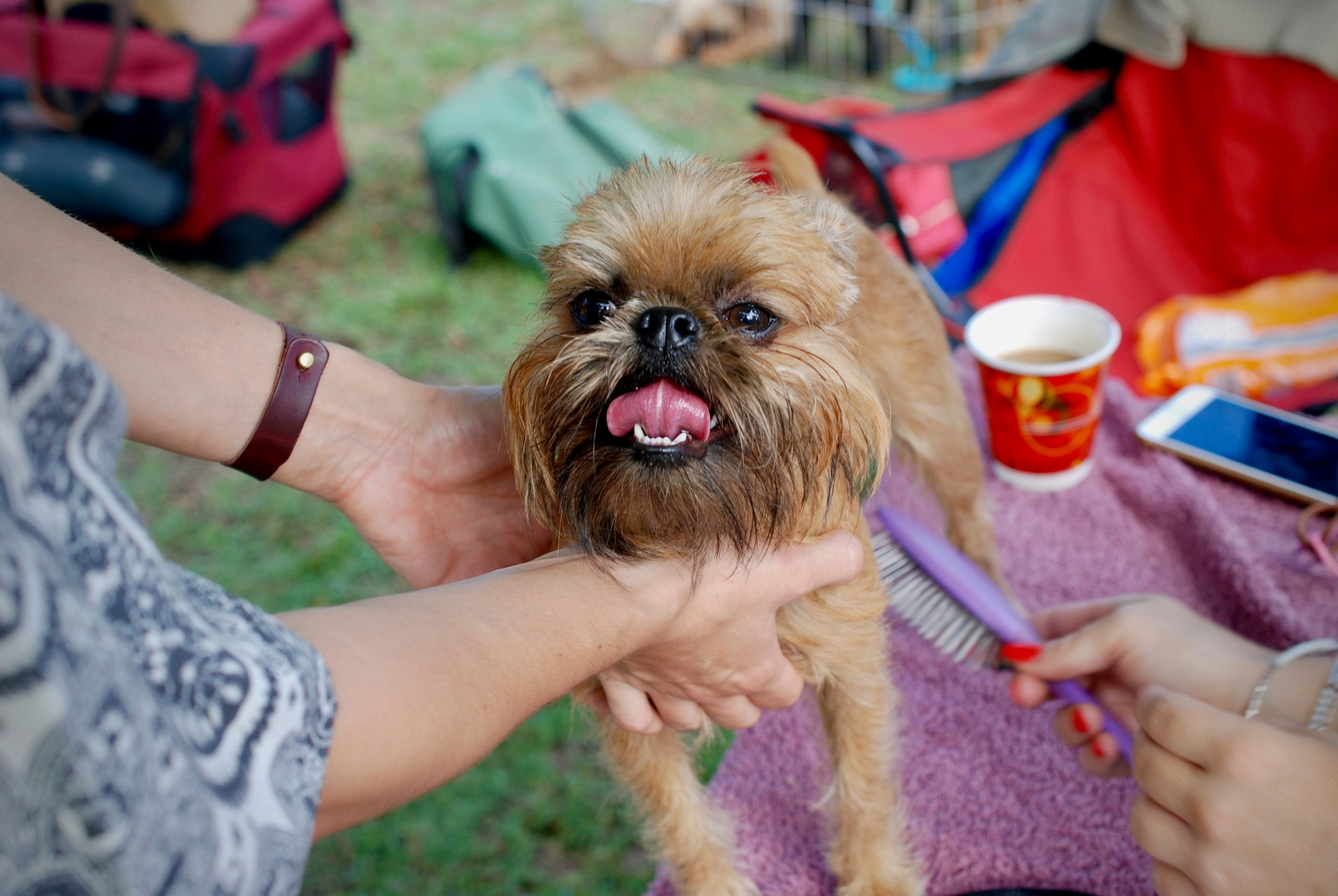The Paw-fect Pedicure: The Comprehensive Guide to the Benefits of Regular Dog Nail Trimming
The article discusses the significance of regular dog nail trimming, including the health and hygiene benefits, techniques and tools for trimming, training and bonding tips, and the importance of professional grooming in some cases.
The Significance of Regular Nail Trimming
Regular nail trimming is not just a cosmetic concern but is essential for the health and comfort of dogs. Long nails can lead to various health issues, including affecting the dog’s weight distribution and natural alignment, making them more prone to injuries. For instance, long nails can alter the way a dog walks, leading to joint pain, muscle strain, and even arthritis over time. This is particularly crucial for older dogs, as they are more susceptible to these issues.
Moreover, overgrown nails pose the risk of curving and growing into the pad of the foot, causing discomfort and pain for the dog. This can lead to a vicious cycle where the dog becomes increasingly averse to nail trimming sessions, making it challenging and stressful for both the dog and its owner. Over time, neglected nails can even affect the dog’s posture, leading to musculoskeletal problems that could have been easily prevented with regular nail maintenance.
In summary, regular nail trimming is vital for maintaining a dog’s physical health, preventing discomfort, and ensuring a better quality of life. It is not merely an aesthetic concern but a fundamental aspect of responsible pet care that directly impacts the overall well-being of dogs. [1]
Health and Hygiene Benefits of Regular Nail Trimming
Regular nail trimming is crucial for the overall health and wellbeing of dogs and cats. Long nails can lead to various health issues for pets, including arthritis, sore muscles, and infections, which can significantly impact their quality of life. For instance, when a dog’s nails are left untrimmed, they can alter the natural alignment and weight distribution, leading to discomfort and even pain. Overgrown nails can also curl and grow into the pad of the foot, causing pain and making nail cutting sessions unpleasant for both the pet and the owner.
In addition to the health benefits for pets, regularly trimming a cat’s nails can help prevent damage to home furnishings. Long and sharp nails can cause scratches to furniture and flooring, and by keeping the nails trimmed, pet owners can maintain a cleaner and more hygienic living environment for both themselves and their pets [2, 3]. Furthermore, maintaining proper nail care for pets can prevent potential harm to the pet and the surroundings, making it an essential aspect of responsible pet ownership. By incorporating regular nail trimming into their pet care routine, owners can contribute to the overall health and comfort of their pets while also ensuring the cleanliness and upkeep of their home.
Nail Trimming Techniques and Tools
When it comes to trimming your pet’s nails, it’s essential to use the right techniques and tools to ensure a safe and stress-free experience for both you and your furry friend. One crucial step in the process is holding the paw firmly but gently to provide stability and prevent any sudden movements that could lead to accidental cuts. By extending the nail, you can clearly see the quick, the pink part of the nail that contains blood vessels and nerves, allowing you to trim the tip safely without causing any discomfort to your pet.
In addition to the technique, the choice of tools is equally important. Nail clippers, guillotine trimmers, and grinders are all viable options for trimming a dog’s nails. Nail clippers are straightforward to use and provide a quick and efficient way to trim the nails, especially for pets who are accustomed to the process. On the other hand, guillotine trimmers offer precise cuts and are ideal for dogs with thicker nails. Grinders are another popular tool that can smooth the nails after trimming, reducing the risk of sharp edges and providing a more comfortable experience for the pet.
For example, if you have a large dog with thick nails, using a grinder might be more effective in achieving the desired nail length and preventing splintering. Conversely, for a smaller dog, nail clippers might be the preferred choice due to their ease of use and precision. Understanding the specific needs of your pet and the benefits of each tool can help you make an informed decision when it comes to nail trimming techniques and tools. By mastering the proper techniques and selecting the right tools, you can ensure that your pet’s nail trimming sessions are efficient, safe, and stress-free.
Training and Bonding for Nail Trimming
When it comes to filing a dog’s nails yourself, there are multiple benefits that go beyond just the cost-effectiveness. It can be a deeply bonding experience with your dog, allowing for quality time spent together and the opportunity to build trust and rapport. By taking the time to handle your dog’s paws and trim their nails, you are fostering a sense of security and comfort, which can have a positive impact on your dog’s overall well-being and temperament. This bonding experience can also help in reducing stress for your dog, as they become more accustomed to the process and the touch of their owner during nail trimming sessions.
To ensure that dogs are comfortable with nail trimming from an early age, it is essential for pet owners to introduce this process gradually and positively. This can involve gentle handling of the paws and nails, providing treats and praise during and after nail trimming, and creating a calm and relaxed environment for the entire experience. By incorporating these practices, pet owners can help their dogs associate nail trimming with positive interactions, making it less stressful for both the pet and the owner. For instance, starting with brief and gentle nail trimming sessions during puppyhood can help dogs grow accustomed to the process and reduce anxiety associated with nail trimming in the long run.
Furthermore, incorporating regular nail trimming into a routine grooming regimen can also serve as a form of regular physical interaction and care, which can enhance the bond between the pet and the owner. This consistent positive interaction can strengthen the relationship and trust between the dog and their owner, contributing to a harmonious and fulfilling pet-parent dynamic.
Professional Grooming and Additional Tips
In addition to the significance of seeking professional grooming for pets that may require it, there are several tips that pet owners can consider to ensure the well-being of their furry friends. One important aspect to keep in mind is the specific technique and tools used for nail trimming. It’s essential to use the right tools and follow proper techniques to avoid causing harm to the pet. For instance, using the wrong type of nail clippers or applying excessive pressure during the trimming process can lead to discomfort or injury for the pet. By being mindful of the tools and techniques, pet owners can help ensure that the nail trimming process is as safe and stress-free as possible for their beloved pets.
Another additional tip for pet owners is to gradually introduce their pets to the nail trimming process from an early age. This can help the pets become more accustomed to the procedure, reducing their anxiety and making the experience less stressful for both the pet and the owner. By incorporating positive reinforcement and rewards during the nail trimming sessions, pets can associate the process with positive experiences, making it easier for the owners to maintain their pet’s nail health over time.
Furthermore, pet owners should also be attentive to any signs of discomfort or distress during nail trimming sessions. It’s crucial to observe the pet’s body language and behavior, as this can provide insights into their comfort level during the process. If the pet shows signs of distress, it may be beneficial to seek professional assistance or explore alternative methods to ensure that the pet’s nail health is maintained without causing unnecessary stress or discomfort. By being attentive to the pet’s well-being and seeking appropriate help when needed, pet owners can ensure that their pets receive the best possible care for their nail health. [4]



